Contents
Blueberry Duke is frost-resistant and productive. It is still rare in our areas, but it is becoming popular due to the healing properties of berries. A blueberry bush in the garden will make an unusual accent with original flowers and berries, crimson autumn decoration.
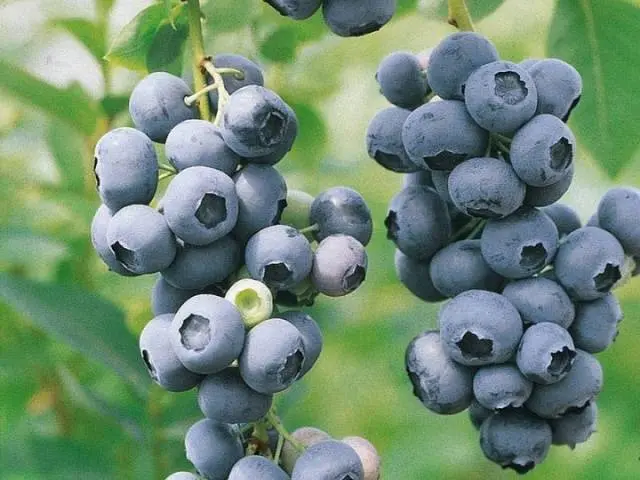
History of breeding
Since 2018, the garden blueberry variety Duke has been in the State Register of Our Country, recommended for cultivation in all regions. Its originator is Rassvet LLC, Nizhny Novgorod Region. The variety was bred in the early 70s by breeders from the USA.
Description of berry culture
A mid-early ripening shrub is characterized by a stable high yield. The first berries are tried in the second year after planting.
General idea of the variety
A bush of a variety with a fibrous root system, which deepens by 15-20 cm, grows quickly, creates a lot of shoots, up to 5 shoots per season. The height of the blueberry Duke is 1,5-2 m. The circumference is the same. Upright skeletal shoots are green, brown in the sun. They branch weakly, which gives an additional plus in the northern regions: the plant and the set fruits are well warmed up by the sun. Fruiting branches are thin, with a bend. Only with age does the bush thicken.
Oval leaves up to 6-8 cm long, 3-4 cm wide, with short petioles. They turn red in autumn. The edges of the leaf blade are solid, the surface is smooth. The flowers of blueberry garden Duke are pale white with a slight pink tint, collected in brushes up to 10 pieces. They have the shape of an elegant bell 1 cm wide.
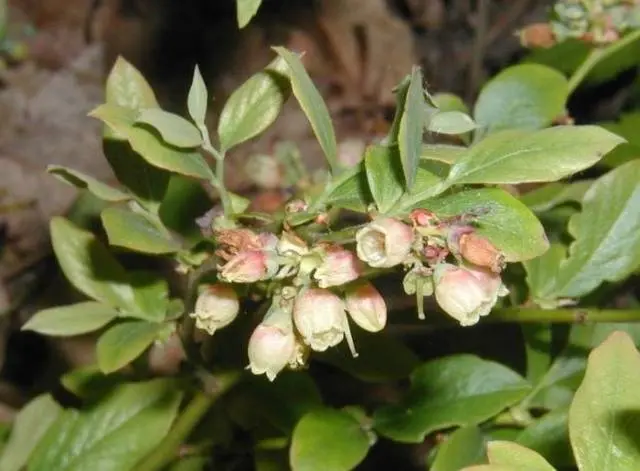
Berries
The fruits of the tall blueberry variety Duke are large, rounded, slightly flattened, 17-20 x 12 mm in size, not uniform. Weight 1,8-1,9 g, up to 2,5 g. The skin of the berries is blue, with a bluish bloom, smooth texture, strong, elastic, pleasantly crunches. Juicy greenish pulp is dense, contains many seeds. The pleasant sweet and sour taste of the Duke blueberry variety is distinguished by piquant astringency and aromatic aftertaste, which becomes more pronounced during storage. The score of the tasters is high – 4,8 points.
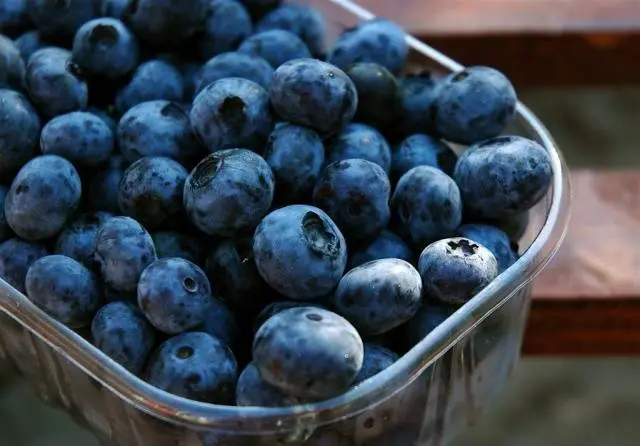
Characterization
According to reviews of the Duke blueberry variety, the plant is cost-effective.
Main advantages
The shrub will become an abundant source of vitamin products in the northern regions, because it tolerates frosts up to 34 degrees. Plantations of garden blueberry variety Duke in the middle climatic zone came out without loss after a harsh winter with a 40-degree cold. The plant is moisture-loving, it needs a lot of water to get the entire root ball wet.
Planting and caring for Duke blueberries is not difficult. For a plant, the composition and structure of the soil is important:
- acidity in the range of 4,3-4,8 pH;
- loose, light mechanical composition of the soil;
- the presence of 40-50 g of sulfur per square meter of land.
The variety is readily planted because of its excellent transportability and extended shelf life – up to two weeks in a cool place.

Flowering period and ripening period
Variety Duke blooms in the last decade of May. But even with a sudden drop in temperature, the flowers persist. Another significant advantage of the bushes is self-fertility. Although in the Duke blueberry reviews there are tips to plant several plants nearby for better pollination. The period from flowering to the beginning of fruit collection is 42-56 days. Berries are harvested in two or three approaches, from the twentieth of July to mid-August.
Yield indicators, fruiting terms
With the age of the bush, the berries do not shrink. Variety Duke is reliable, productive, high-yielding. The berries are separated with a dry separation, mechanized harvesting is also possible. Plants with complex care give up to 6-8 kg. A bush of tall blueberries Duke is early-growing: the berries are tied in the second year after planting. The plant brings a solid harvest for 20 years.
Scope of berries
Variety Duke is universal, suitable for freezing and heat treatment. Given the shelf life of fruits in the refrigerator, you can treat yourself to a healing delicacy for a month and a half.
Disease and pest resistance
With proper planting and care for tall blueberries, the plant is little affected by pests. From fungal diseases, traditional early spring treatment with fungicides is used.
Advantages and disadvantages of the variety
Distinctive properties brought the Duke variety to the list of plants of industrial importance:
- precocious;
- large-fruited;
- with a pleasant taste and aroma;
- fruitful;
- friendly ripening of berries;
- transportable;
- frost-resistant;
- resistant to pests.
The imperfections of the variety include only the specific requirements of the bushes for the special composition and moisture content of the soil.
How Blueberry Duke Reproduces
The shrub in nurseries is propagated by seeds, but such seedlings will yield a crop only after 8 years. The most convenient reproduction of blueberry Duke by layering and cuttings:
- A shoot is laid in a groove near a bush with peat and sawdust, fixed and covered with a film. Sprouts are dug up in 1-2 years.
- Cuttings cut in autumn are rooted in the substrate in spring. From the greenhouse, the sprouts are moved in the fall to the ground, protecting them from frost.
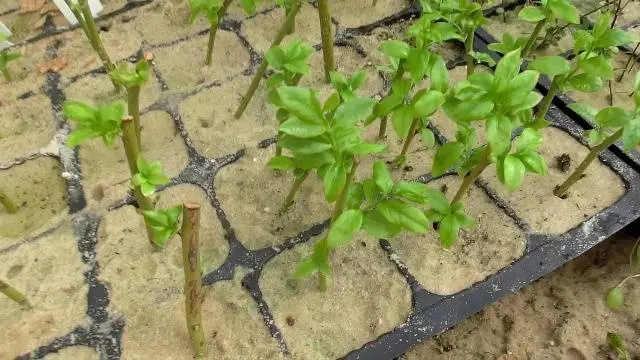
Rules of landing
For a good harvest, it is important to plant the bushes correctly.
Recommended dates
Under the conditions of the middle lane, Duke blueberries are planted in the spring. Until autumn, the bushes take root. In the south, they also move in early autumn.
Choosing the right place
Garden varieties are located in well-lit, drained areas. In the northern regions, places protected from cold winds are chosen. Groundwater should lie no higher than 0,6 m.
Soil Preparation
For planting blueberries Duke prepare a sandy-peat substrate. The soil is acidified:
- peat;
- citric acid;
- table vinegar.
On alkaline soils, be sure to check the acidity with instruments. Sulfur is applied to the site a year before planting.
On alkaline soils, spacious pits are prepared for the substrate: 0,8 x 0,8 m, 60 cm deep. Agrotextiles are placed at the bottom, which will help maintain the created acidity. A layer of gravel and sand for drainage, then the required soil:
- 60% acid peat;
- 20% old needles;
- 10% crushed pine bark and small sawdust.
Selection and preparation of seedlings
For moving, choose 2-3-year-old bushes with elastic branches, without damage to the bark, with a closed root system.
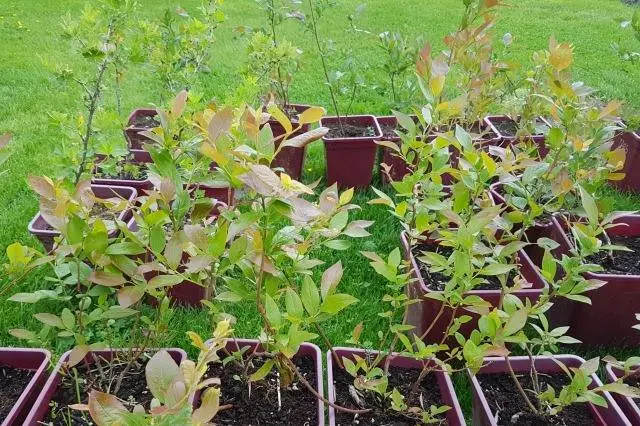
Algorithm and landing scheme
Between the bushes of the Duke variety, the distance is not less than 1,2-1,5 m. The planting procedure is normal:
- The seedling is placed 4 cm lower than it grew in the container.
- The root collar deepens.
- The bush is cut off.
- The hole is watered and mulched.
Culture aftercare
According to the descriptions of Duke garden blueberries, this is an unpretentious variety.
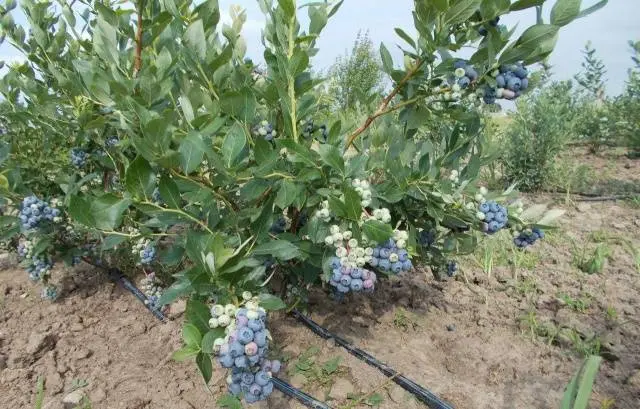
Necessary activities
The soil is loosened, after watering it is mulched. Watered twice a week, 10 liters per bush, do not allow stagnant water. You can not fertilize with fresh manure. Take mineral preparations:
- nitrogen in the form of ammonium;
- potassium sulfate.
- superphosphate.
shrub pruning
Duke blueberry care includes pruning in the 4th year. Lower drooping shoots are removed in early spring, damaged branches are cut on straight lines. The procedure is carried out, given that the fruits are tied on 2-year growths. In the 9th year, 20% of old branches are cut.
Preparation for winter
Despite the frost resistance of Duke blueberries, in regions with harsh and snowless winters, the bushes, after being mulched, are covered with agrofiber. If snow falls, it is applied to the plants.
Collection, processing, storage of crops
Strong skin allows Duke berries to be kept fresh for more than 10 days. Compotes and jams are prepared from them. Frozen blueberries are good.
Diseases and pests, methods of control and prevention
When the bushes thicken, outbreaks of fungal diseases are possible.
Diseases | Evidence | Treatment | Prevention |
Antraknoz | Dark spots on shoots and leaves, fruits | “Fitosporin-M” or fungicides
| Removing fallen leaves |
Gray mold | Gray spots of mycelium, rotting | Give nitrogen preparations strictly according to the norm, thin out the bush | Processing in early spring with iron sulphate, at the end of May with Bordeaux liquid |
Cancer | Cracks and red ulcers on the bark | Thinning crop | Apply “Azophos”, “Skor” |
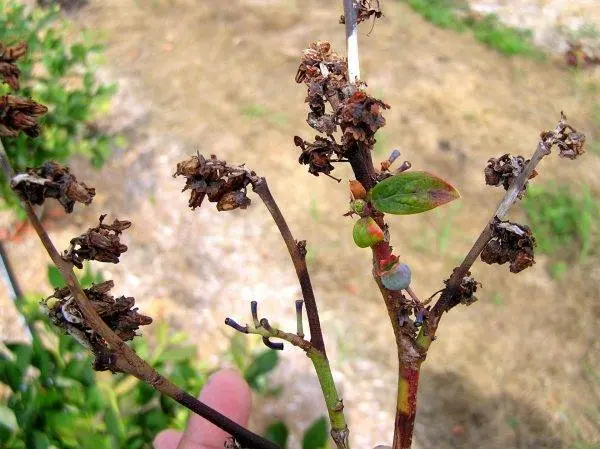
Pests rarely attack the plant.
vermin | Evidence | Performing the shaping | Prevention |
leaf roller | Leaves are twisted, buds and flowers are damaged | Insekticidы | Removal of fallen leaves and carrion |
Chafer | The leaves turn yellow – the larvae gnaw on the roots | “Antikhrushch” | Shaking off, light traps |
aphid | damaged leaves | Soap or soda solution | Fight against ants |
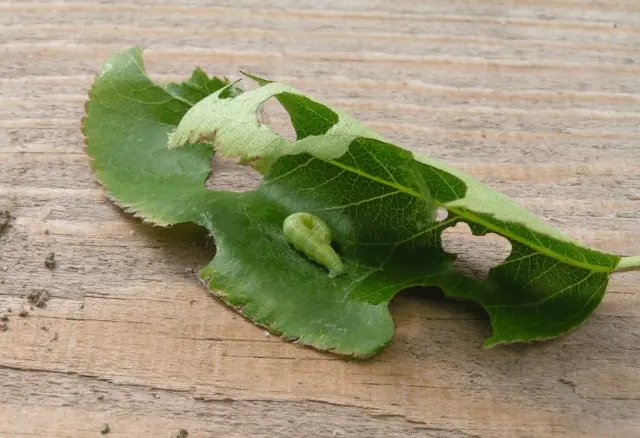
Conclusion
Blueberry Duke is a high-yielding variety that is easy to care for. Taking care of the right soil and planting site, they enjoy vitamin fruits in the summer. Berry shrub is a good choice for gardens in the middle climatic zone.









